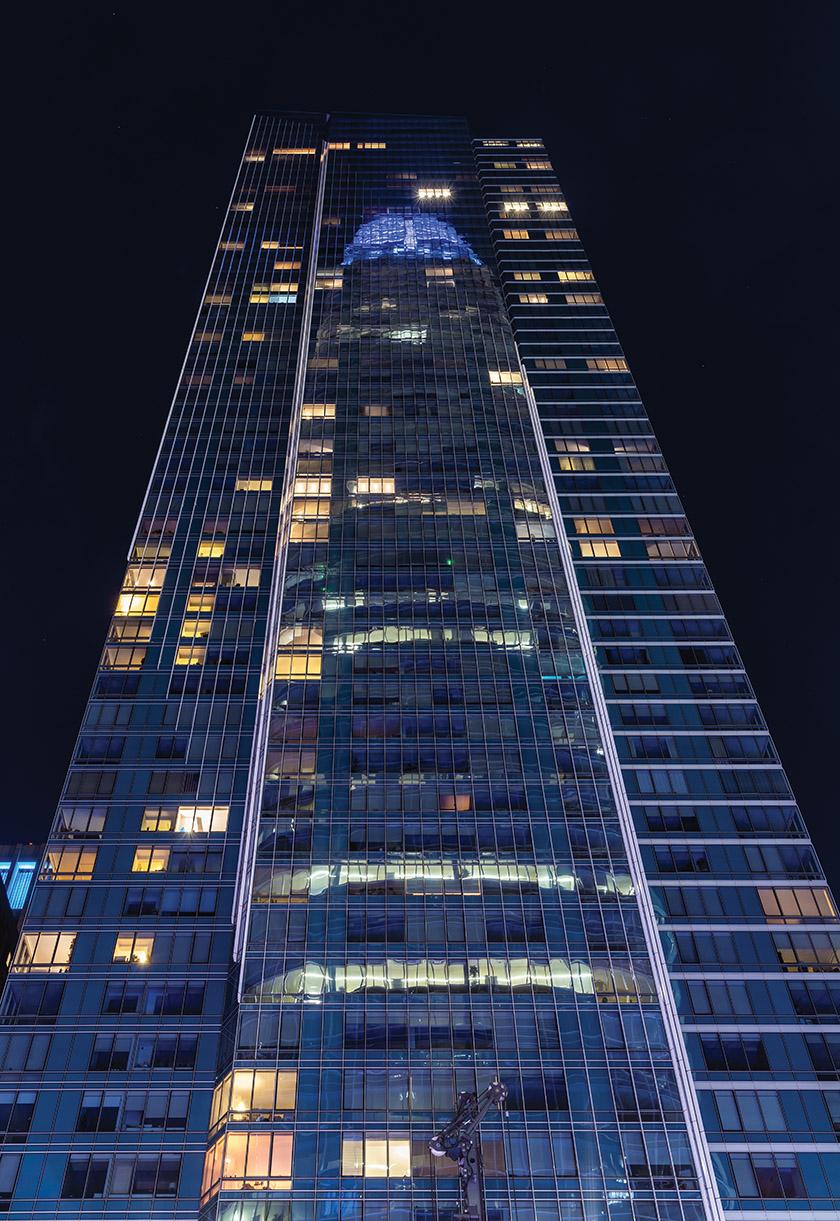
Staying Safe
Without the proper coverage, even seemingly inconsequential design and construction management errors and mishaps can turn into financial disasters. Billed as one of the world's most luxurious buildings and home to celebrities like legendary quarterback Joe Montana, Millennium Tower in San Francisco opened in 2009, with more than 400 multimillion-dollar units, soaring panoramic views, and world-class amenities. Despite the fanfare and extensive planning, however, the 58-story high-rise sunk, tilting more than 18 inches due to the alleged improper installation of the building's pilings and the natural dewatering process that weakened the soil beneath the tower. A $100 million fix that included installing 52 new pilings into bedrock needed to be halted in 2021 when the building unexpectedly sunk another inch after work began.
Unfortunately, stories like these are far too common for an industry that often spends hundreds of millions of dollars to correct problems. The transportation, warehouse, health care, logistics, institutional, and sports environments are riddled with exorbitant claims related to everything from the installation of inadequate HVAC systems to the inability to properly open and close retractable stadium roofs.

In some cases, the problems arose even after the key players followed the ordinary and customary standards of care for design professionals. Others were the fault of circumstances ranging from hiring professionals who lacked the proper experience to the use of subpar materials or erroneous surveys. More immediate challenges such as work disruptions related to COVID-19 or supply chain shortages can only exacerbate these problems.
The responsibility to correct problems often falls directly on the project's owner or developer once all the usual resources are depleted. Unbeknownst to some owners, the limits on the design professional or design builder's architects and engineers professional liability (A&E PL) policy could very well be exhausted by other unrelated claims before the exposures on their projects are even identified. Remember: Design-related issues can be discovered long after project completion. In the case of San Francisco's Millennium Tower, the cause of the building's shifting and tilting problem wasn't uncovered until nearly seven years after its grand opening.
As a result, owner's protective professional indemnity (OPPI) has gained great traction for its ability to help cost-effectively protect project owners from the exposures of not only architects and engineers, but also designers/builders, construction managers, subcontractors, and other firms performing professional services. Written solely for the benefit of project ownership, OPPI policies typically provide dedicated excess professional liability limits for costs the owner is legally entitled to that are above and beyond the underlying architect and engineering, as well as construction professional liability coverages. Policies also typically include a third-party defense and indemnity insuring agreement for claims brought directly against the owner. Coverage is intended to help address professional liability exposures throughout the life of the project and include an established policy retroactive date beginning at the date of first executed professional liability contract, through the project construction period, and extending to the termination of the statute of repose.
Here are some additional details about how the typical OPPI policy can help protect project owners:
Difference in Conditions Provisions (DIC). Not all architects and engineers policies are built alike. Some place a greater emphasis on price and economy, rather than the quality of coverage. They also often include a wide variety of exclusions that can range from bridges and tunnels to condominium projects to consequential damages. This provision allows the OPPI to “drop” into a primary insurance position in the event it is more restrictive than the OPPI. In the event the underlying professional liability insurance is fully eroded, the OPPI policy will likely still be available for the client, albeit, potentially subject to a self-insured retention.
Professional Indemnity Dedicated Capacity Solely for Owners.Often called “owners protective,” this coverage is offered to project owners who directly hold contracts with design and construction professionals. While the OPPI typically provides first-party indemnity to the owner for damages incurred as a result of the design professional's negligence, it does not extend the same benefits of coverage to the design and construction teams. Since the design and construction professionals are not named in the policy and the OPPI is written in the name of the owner, the professional indemnity is intended to sit in excess of the design professional's professional liability insurance — essentially supplementing the coverage that the firms bring to the project through their own professional liability insurance programs.
The responsibility to correct problems often falls directly on the project's owner or developer once all the usual resources are depleted.
Minimum Insurance Requirement (MIR). Many incorrectly see the MIR as an attachment to the professional indemnity. It is not. Rather, the MIR assists in pricing the overall OPPI program and establishes a minimum attachment point for the OPPI program. In short, the OPPI sits over any remaining capacity of the underlying professionals' insurance, whether or not it has been eroded by prior claims. This typically applies to every professional services firm under direct contract with the owner. So, if the MIR is set at $1 million for each claim/aggregate and $2 million is available from the responsible design professional's PL insurance, the OPPI would attach at $2 million provided all the other terms and conditions under the policy were met. The same would also occur in the event the design professional's PL limits are exhausted or are not applicable due to the exclusionary wording. In a similar scenario, if the MIR is set at $1 million for each claim/aggregate and the design professional's PL provides nothing, the PI would either attach to the first dollar or potentially subject be to a self-insured retention (depending on the particular policy).
Self-Insured Retentions (SIRs). Under most OPPI programs, the SIR applies only to the third-party defense and indemnity insuring agreement. The protective indemnity insuring agreement usually has no retention, relying on underlying PI insurance to act as a de facto SIR. In some cases, a carrier may apply an SIR to losses arising out of a specific design or construction professional whose contract contains limitations of liability which are below the MIR. For instance, if a geotechnical engineer has a $50,000 limitation of liability and the MIR for the geotech is $2 million, a carrier may use the SIR to pass on the financial responsibility to the owner to satisfy the attachment point under the OPPI for this exposure. In addition to reducing the concerns of owners for the quality and nature of the design and construction professional's PL insurance, OPPI risk transfer strategies can also be extremely cost-effective. Depending on the nature of the project and the quality of the contractual arrangements between owners and construction professionals, OPPIs often can be 50 percent or 60 percent less than comparable project-specific professional liability coverage for similar capacity (that is, limits).
Owners also have the certainty and convenience of paying only once for the entire insurance program and budgeting the placement through their project P&L. With inflation on the rise and insurance rates seeming to follow suit, locking in a program for the life of a project's professional liability exposure is increasingly becoming less of a discretionary risk management technique and more a case of good business sense.
Subsequently, as the availability of project-specific A&E and construction PL policies becomes increasingly scarce, expensive, and/or limited, the protections offered through OPPI programs are now helping provide owners and developers the financial security needed to overcome long-term challenges and complete projects on time, within budget and profitably well beyond project completion. In the age of ever-increasing construction and design cost as well as nuclear verdicts, this program can be effective at helping to shield project owners from the potentially crippling damages resulting from design mistakes, project delays, and professional services errors and omissions.
Joseph Reynolds, JD, CRIS
Senior Vice President in RT Specialty's Environmental and Construction Professional Practice. Contact him at joseph.reynolds@rtspecialty.com.





